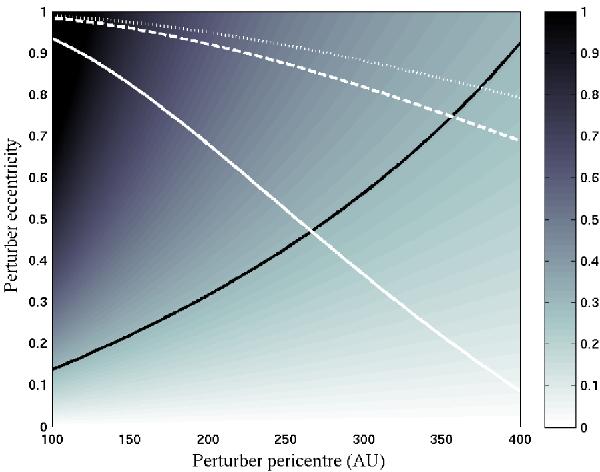Fig. 2

Example colour map of the maximum induced eccentricity 2ef imposed by a planetary perturber on a particle with semi-major axis 100 AU and eccentricity e = 0 as a function of its periastron and eccentricity, as estimated from Eq. (2). The black line corresponds to a 2ef = 0.3 condition, which was set to mimic the condition for the disk of ζ2 Reticuli. Note that it does not depend on the mass of the planet. The white lines show the parameters for which the typical timescale to reach a steady state at 100 AU is tprec = 1 Gyr, using Eq. (4). This timescale depends on the mass: mp = 0.1 MJup (solid line), 1 MJup (dashed line) and 2 MJup (dotted line). For example, a perturber of mass 0.1 MJup, periastron qp = 150 AU and eccentricity ep = 0.4 is expected to produce a significantly eccentric ring in shorter than 1 Gyr, although spiral patterns may remain since it can take several precession timescales for them to vanish, as was shown by Wyatt (2005).
Current usage metrics show cumulative count of Article Views (full-text article views including HTML views, PDF and ePub downloads, according to the available data) and Abstracts Views on Vision4Press platform.
Data correspond to usage on the plateform after 2015. The current usage metrics is available 48-96 hours after online publication and is updated daily on week days.
Initial download of the metrics may take a while.


